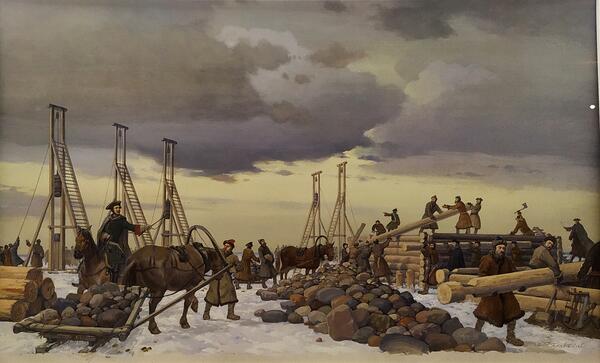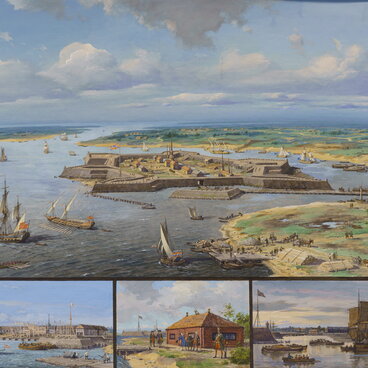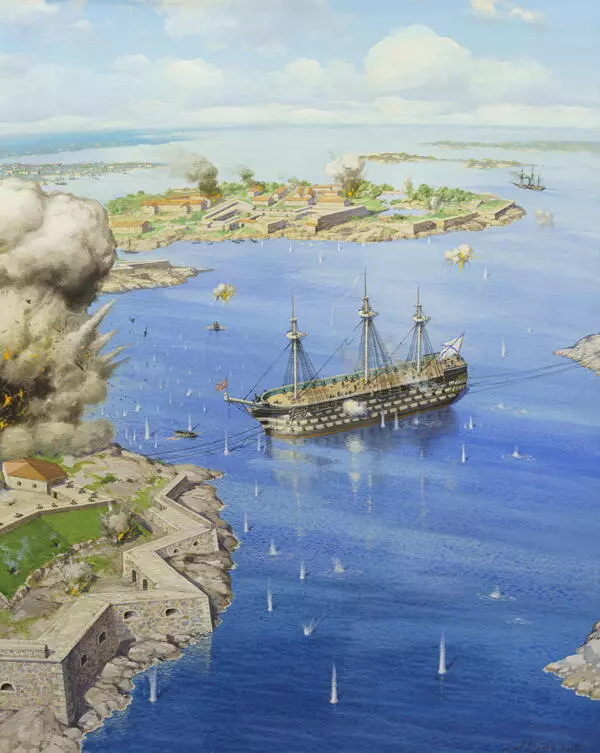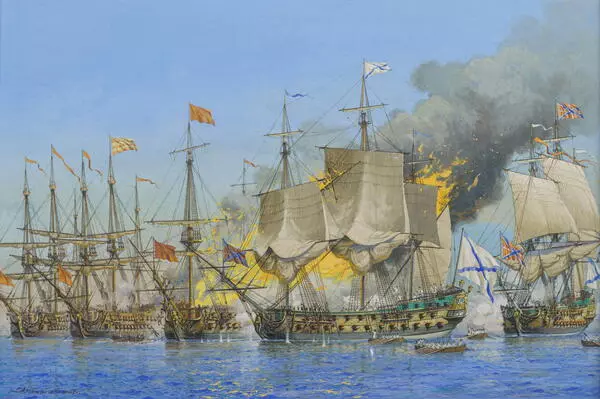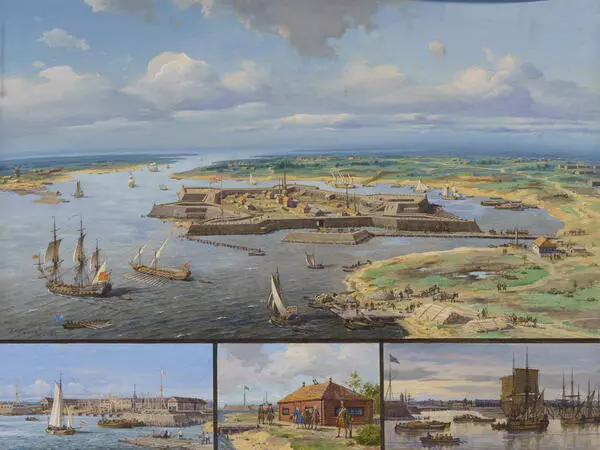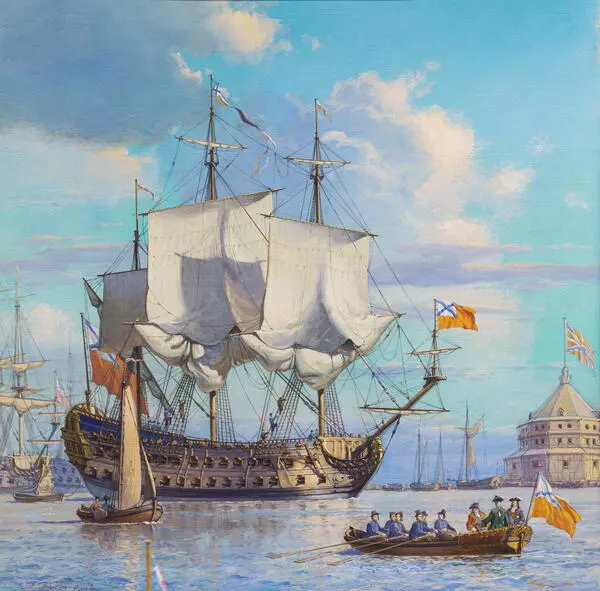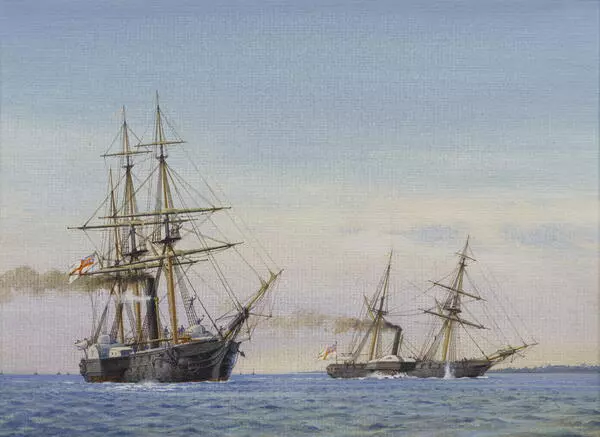After the defeat at Narva in the Great Northern War of 1700–1721, Peter the Great put in place important steps to build up Russia’s military potential and strengthen the defense of its northwestern border. It was necessary to establish a naval base in the eastern area of the Gulf of Finland that could house a large fleet. There was also a need for coastal batteries that could protect the future naval base and prevent the Swedish fleet from approaching Saint Petersburg. A decision was made to build a fort on the shoal on the other side of the fairway that could fire at enemy ships appearing from either direction.
In the winter of 1703–1704, huge cribs — structures made of logs and filled with stones — were constructed on ice at the spot of the future fort and sunk to the bottom. By the beginning of May 1704, the construction of the fort — a three-story wooden coastal battery — was finished, and the batteries represented by 14 six-pounder cannons were delivered to the new fort. It was named Kronschlot — after the German word meaning a “crown castle”.
The construction of Kronschlot was considered a top-priority project because it was necessary to protect the fairway with coastal artillery by the beginning of the 1704 navigation season. After that, large-scale operations were implemented to expand the territory of Kronschlot and build new fortifications. The newly built batteries and structures were named New Kronschlot. Their construction was associated with high labor costs, material expenses, and time expenditures. New Kronschlot was ready only in 1716. Alongside New Kronschlot, Old Kronschlot still existed: its structures were fortified, and the number of weapons was increased. As a result, Old Kronschlot — a small wooden tower — formed the southernmost tip of the fortifications. Kronschlot significantly improved the combat capabilities of the coastal artillery in the defense system of the Kotlin island and its roadstead. The construction of artillery batteries on an artificial island was a true innovation. Based on the experience of Kronschlot, other island fortifications were built later.
In the winter of 1703–1704, huge cribs — structures made of logs and filled with stones — were constructed on ice at the spot of the future fort and sunk to the bottom. By the beginning of May 1704, the construction of the fort — a three-story wooden coastal battery — was finished, and the batteries represented by 14 six-pounder cannons were delivered to the new fort. It was named Kronschlot — after the German word meaning a “crown castle”.
The construction of Kronschlot was considered a top-priority project because it was necessary to protect the fairway with coastal artillery by the beginning of the 1704 navigation season. After that, large-scale operations were implemented to expand the territory of Kronschlot and build new fortifications. The newly built batteries and structures were named New Kronschlot. Their construction was associated with high labor costs, material expenses, and time expenditures. New Kronschlot was ready only in 1716. Alongside New Kronschlot, Old Kronschlot still existed: its structures were fortified, and the number of weapons was increased. As a result, Old Kronschlot — a small wooden tower — formed the southernmost tip of the fortifications. Kronschlot significantly improved the combat capabilities of the coastal artillery in the defense system of the Kotlin island and its roadstead. The construction of artillery batteries on an artificial island was a true innovation. Based on the experience of Kronschlot, other island fortifications were built later.

